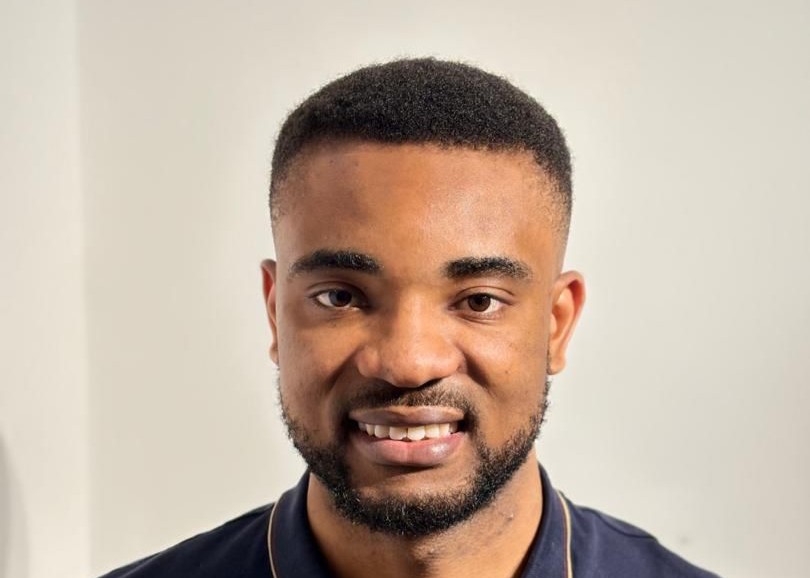From the bustling streets of Ijebu Ode in southwest Nigeria to the sleek design rooms of global tech firms in the UK, Kehinde Agbaje’s journey has been anything but conventional. As a teenager, he was a bundle of energy, often restless, until his single mother enrolled him in a local computer school. That decision would become the turning point in his life. Immersed in Adobe PageMaker and CorelDRAW, Agbaje discovered a new world where creativity met problem-solving. His early experiments with colourful posters and campus event flyers hinted at one thing: the urge to build beautiful, functional tools for real people.
While studying electrical and electronics engineering at Olabisi Onabanjo University, Agbaje’s focus subtly shifted. He was drawn more to the user experience of software than just its functionality. He learned to code in C++ and Java, but always filtered his logic through a design lens. For him, the question was not ‘does it work?’; it was, ‘does it work for people?’ By graduation, he had one clear goal: to build a career that fused technology with thoughtful, human-centred design.
This design philosophy defined his earliest professional steps. At BudgIT, Nigeria’s leading civic-tech organisation in Lagos, Agbaje rose from intern to lead UX designer over six years. His mission was simple: simplify data for the everyday Nigerian. Redesigning public-budget dashboards into visually digestible formats, Agbaje and his team helped increase engagement by over 60%. His work helped BudgIT grow beyond Nigeria, operating in five countries and contributing to budget transparency across Africa.
His exposure wasn’t limited to civic tech. Through Fitila, BudgIT’s consulting arm, Agbaje designed interfaces for giants like Nestlé Nigeria and Access Bank, and global institutions like the African Union and British Council. These roles demanded more than design. They required cultural fluency, clear communication, and negotiation skills. Whether building mobile banking apps or educational tools, Agbaje ensured the user was always central. He became the bridge between client vision and user needs, often helping stakeholders see the hidden gaps in their assumptions.
Agbaje’s design journey wasn’t just marked by accolades, though there were many, including an Employee of the Quarter award in 2020 and top prizes in hackathons like the World Bank-sponsored civic challenge. More significantly, he used these platforms to amplify his message: design is a tool for justice, access, and empathy. His work at eHealth Africa drove this home. There, he developed health apps used by field workers to track diseases and coordinate vaccinations in remote areas. Designing for people with limited literacy, on rugged devices in harsh conditions, taught him how inclusive design could be lifesaving.
So much has changed since Agbaje’s first role at BudgIT. Today, artificial intelligence is shaking the world of design, ensuring faster project delivery, and many roles may be at risk. He says it is critical today, more than ever, for UX designers to reconsider their value-add beyond being just employees.
“I think the most important thing is mastering your technical skill set by upskilling, learning, and relearning. The second is being someone that collaborates effectively with others. Communication skill sets, communication in due time, and whenever you have concerns about something, you voice them out,” he says. These have been critical to his career trajectory.
In September 2022, Agbaje joined a global EdTech company trusted by institutions globally. Now a senior UX designer in their international team, Agbaje is designing global education tools used by millions and shaping their learning experiences.
The experience of working in the UK is quite different from working in Nigeria.
“While back home, some of us may be fixated on perfection before everything goes out; here, the focus is on the agile route. There are so many layers to quality testing and auditing, making the work more globally competitive and error-free, ensuring that there is consistency in the work output. They see cross-functional collaboration as an exceptional skill, which is not just you working in your bubble but that you cross-collaborate to ensure everyone contributes,” Agbaje says. He is quickly adapting to his new working environment.
Mentorship has remained a recurring theme in Agbaje’s journey. From leading design-thinking workshops at BudgIT to mentoring aspiring designers on ADPList, he has made it his mission to uplift others. At the organisation, he’s not just a designer. He’s a leader who nurtures junior UX writers and designers, believing that design teams thrive when learning is continuous and collaborative.
Now based in the UK, Agbaje is looking ahead. His aspirations include founding a UX consultancy focused on inclusive, user-informed design—one that bridges continents, cultures, and capabilities. Closer to home, he’s committed to supporting underrepresented designers in the UK through structured mentorship programmes. He sees his rise not as a solo sprint but as a ladder others can climb.
Reflecting on his journey, from fiddling with PageMaker to designing tools used by millions, Agbaje remains grounded. To him, awards and recognition are not the endgame. What matters most is impact: products that solve real problems, teams that thrive under his guidance, and communities that become more empowered through design.
As the design world confronts rapid technological shifts, Kehinde Agbaje stands out as a rare breed: a UX designer with heart and a mentor with vision.






